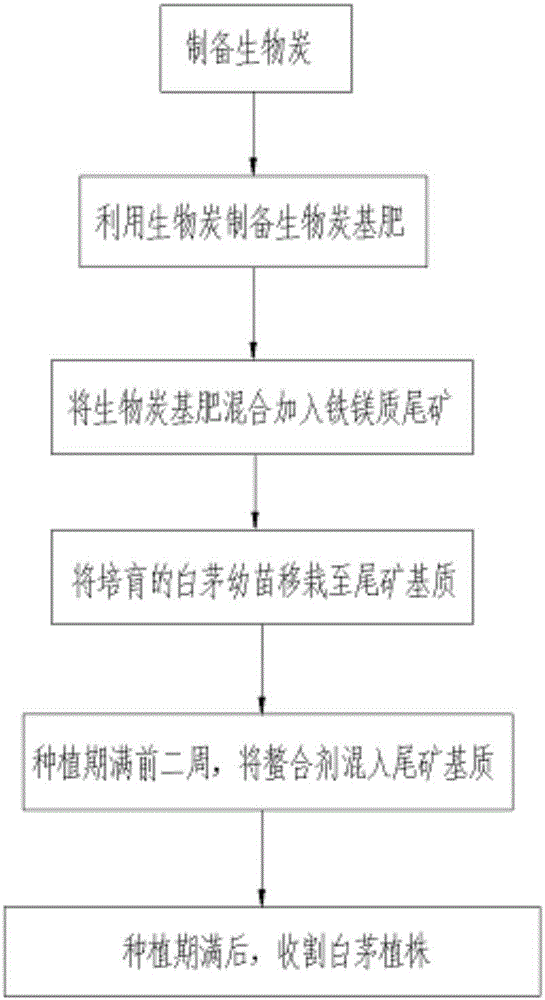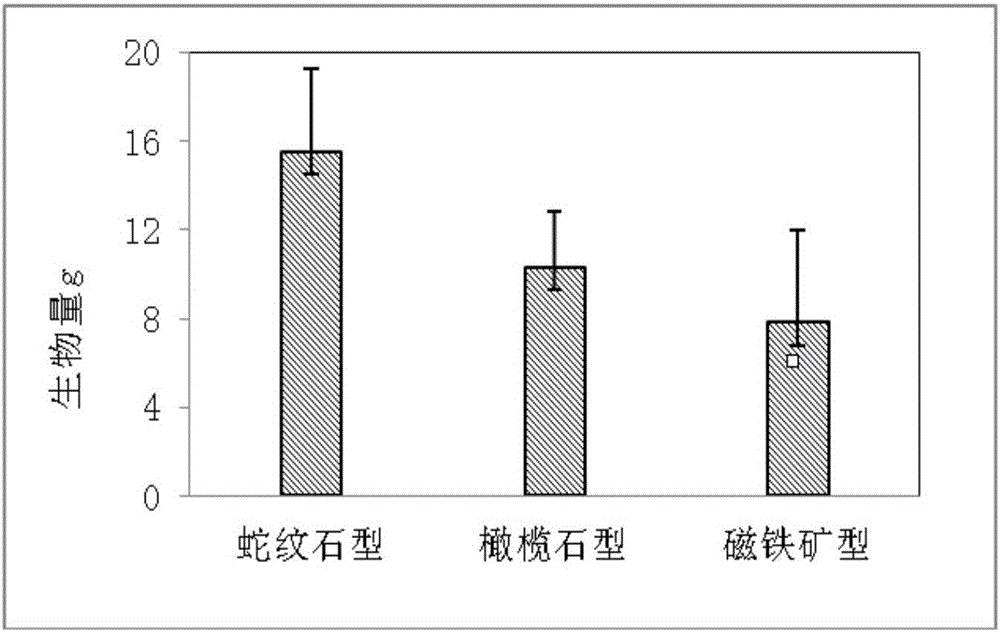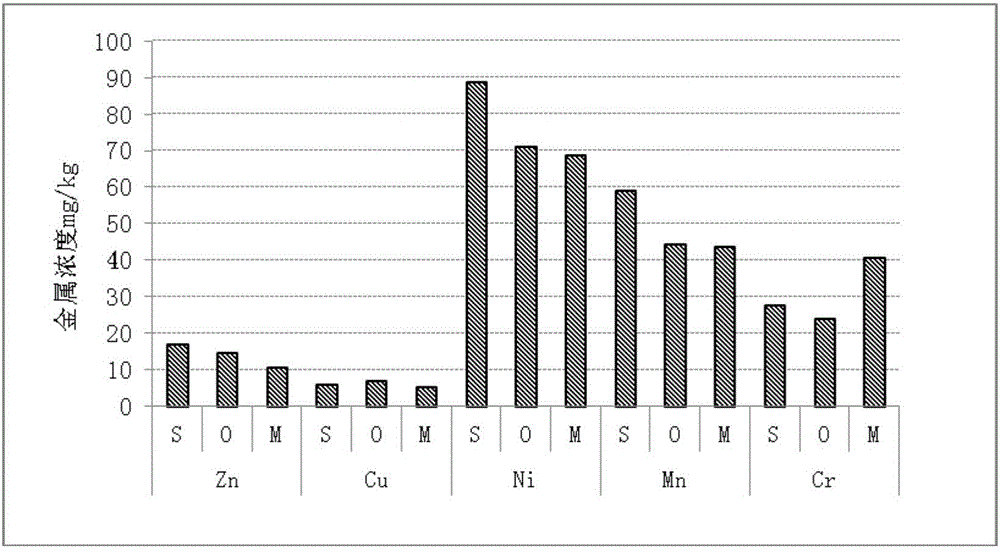Method for remediating heavy metal contaminated soil by utilizing charcoal and chelating agent to strengthen plant
A technology for phytoremediation and polluted soil, applied in the restoration of polluted soil and other directions, can solve the problems of restricting the development of phytoremediation technology, low bioavailability of heavy metals, etc., and achieve low planting difficulty, good social and economic benefits, and low production costs. Effect
- Summary
- Abstract
- Description
- Claims
- Application Information
AI Technical Summary
Problems solved by technology
Method used
Image
Examples
Embodiment 1
[0038] Such as figure 1 As shown, in this embodiment, the serpentine-type mafic tailings are used as the cultivation substrate.
[0039] Specific steps: collect agricultural and forestry residues, air-dry and pulverize them, and perform pyrolysis and carbonization for 4 to 8 hours under anaerobic conditions of 300°C to 700°C to obtain biochar; 25 to 40 parts of ground biochar, 20 to 30 parts of dried pig manure 8 to 15 parts of urea, 10 to 20 parts of calcium magnesium phosphate fertilizer, and 5 to 10 parts of potassium chloride, mixed evenly to obtain biochar-based fertilizer.
[0040] Mix the compounded biochar-based fertilizer and tailings matrix at a mass ratio of 1:5, and place it stably for 15 days. The seeds of Imperatae imperata were placed in a petri dish containing nutrient solution to grow seedlings for 2 weeks; then, 40 seedlings of uniform size were selected, transplanted into mixed culture medium, and cultivated for 75-90 days, during which deionized water was ...
Embodiment 2
[0047] Based on Example 1, in this example, olivine-type mafic tailings were used as the cultivation substrate, and the compounded biochar-based fertilizer and tailings substrate were mixed uniformly at a mass ratio of 1:6, and placed stably for 18 days. The seeds of Imperatae imperata were placed in a petri dish containing nutrient solution to grow seedlings for 2 weeks; then, 35 seedlings with a relatively uniform size were selected, transplanted into a mixed culture medium, watered 300ml at the initial stage, and cultivated for 75-90 days. Deionized water was replenished daily during this period. When planting to 60-75 days, apply 10mmol / L EDDS chelating agent solution and stir evenly. After the planting period expires, collect the Imperata imperata plants, rhizosphere and non-rhizosphere tailings respectively, rinse the Imperata imperata plants with deionized water, dry them naturally, and then dry and grind them.
[0048] Determination of heavy metal content in tailings ...
Embodiment 3
[0054] Based on Example 1, this example uses magnetite-type ferro-mafic tailings as the cultivation substrate, mixes the compounded biochar-based fertilizer and the tailings substrate at a mass ratio of 1:8, and places them stably for 20 days. Take the seeds of Imperata prawns and place them in a petri dish containing nutrient solution to grow seedlings for 2 weeks; then, select 40 seedlings with a relatively uniform size, transplant them into the mixed culture medium, water 350ml at the initial stage, and cultivate them for 75-90 days, during which time supplement Deionized water. When planting to 60-75 days, apply 15mmol / L citric acid chelating agent solution to the matrix and stir evenly. After the planting period expires, harvest the Imperata imperata, collect the rhizosphere and non-rhizosphere tailings of the Imperata imperata, rinse the Imperata imperata plant with deionized water, dry it naturally, and then dry and grind it.
[0055] Determination of heavy metal conte...
PUM
 Login to View More
Login to View More Abstract
Description
Claims
Application Information
 Login to View More
Login to View More - R&D
- Intellectual Property
- Life Sciences
- Materials
- Tech Scout
- Unparalleled Data Quality
- Higher Quality Content
- 60% Fewer Hallucinations
Browse by: Latest US Patents, China's latest patents, Technical Efficacy Thesaurus, Application Domain, Technology Topic, Popular Technical Reports.
© 2025 PatSnap. All rights reserved.Legal|Privacy policy|Modern Slavery Act Transparency Statement|Sitemap|About US| Contact US: help@patsnap.com



